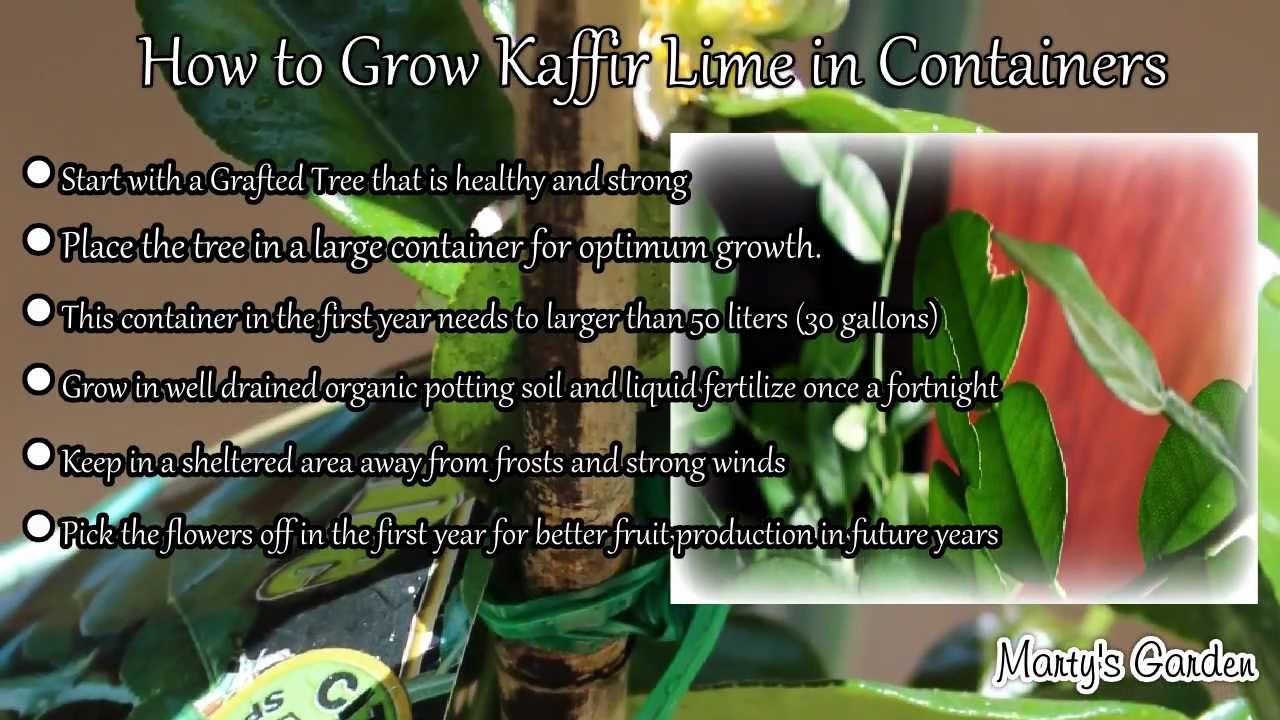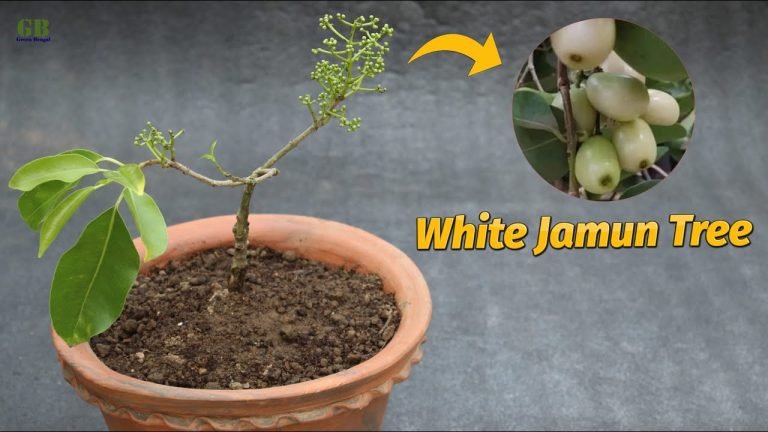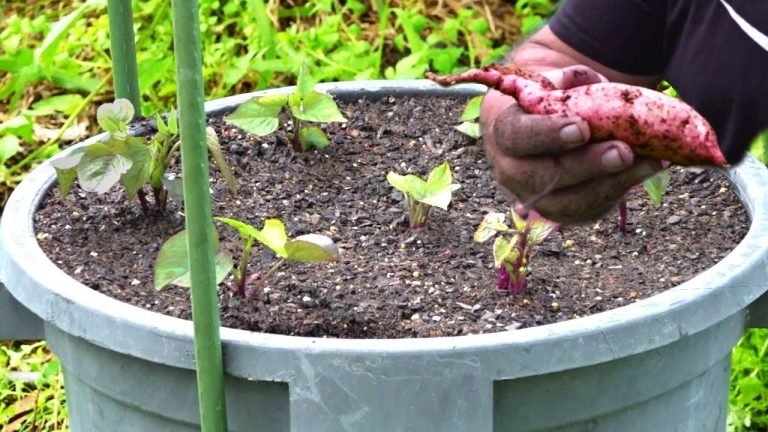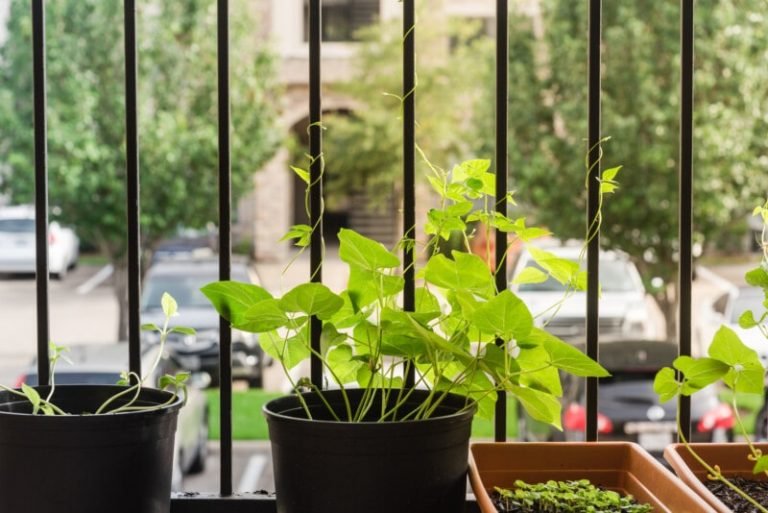how to grow kaffir lime tree in a pot – [Beginners Guide]
Are you tired of buying kaffir lime leaves at the store, or worse, not being able to find them at all? Have you considered growing your own kaffir lime tree at home? It’s easier than you might think, and it’s a great way to add some fresh flavor to your cooking.
One of the best things about growing a kaffir lime tree in a pot is that it allows you to have fresh leaves all year round, even if you live in a colder climate. Plus, the tree itself is a beautiful addition to any patio or indoor space.
As someone who loves to cook with fresh herbs and ingredients, I can attest to the value of having a kaffir lime tree at home. Not only are the leaves essential in Thai and Southeast Asian cuisine, but the fruit can also be used in a variety of dishes and beverages.
In this guide, we’ll cover everything you need to know about growing a kaffir lime tree in a pot, from selecting the right container and soil to pruning and harvesting. We’ll also discuss common problems that you might encounter and how to troubleshoot them.
So if you’re ready to take your cooking to the next level and enjoy the benefits of growing your own kaffir lime tree, let’s dive in!
Pot or container selection
When it comes to growing a kaffir lime tree in a pot, there are a few key things to keep in mind when selecting the right container. First and foremost, you want to choose a pot that is large enough to accommodate the tree’s root system and provide adequate drainage.
The size of the pot will depend on the size of the tree you want to grow. As a general rule, you should aim for a pot that is at least 16 inches (40 cm) in diameter and 16 inches (40 cm) deep for a young tree. This will give the roots enough space to spread out and promote healthy growth. For a more mature tree, you may need a larger pot to accommodate the root system.
In terms of construction, you’ll want to choose a pot that is made of a durable material, such as ceramic or plastic. Avoid pots made of metal or wood, as they can leach chemicals into the soil or rot over time. The pot should also have drainage holes in the bottom to allow excess water to escape.
Another important factor to consider is the weight of the pot. Kaffir lime trees can grow quite tall and heavy, so you’ll want to make sure that the pot you choose is sturdy and won’t tip over. Consider placing your pot on a sturdy stand or platform to provide additional support.
Overall, choosing the right pot is crucial for the success of your kaffir lime tree. By selecting a pot that is the right size, made of durable materials, and provides adequate drainage, you can help ensure that your tree thrives and provides you with fresh, flavorful leaves for years to come.
Make suitable soil mix
Kaffir lime trees require well-draining soil that retains moisture, as well as good aeration and nutrition. A soil mix that works well for growing kaffir lime trees in containers should be able to hold moisture without becoming waterlogged and should provide essential nutrients to the plant’s roots. Here are some factors to consider when choosing a soil mix for your kaffir lime tree:
Type
It is best to use a high-quality potting mix that is specifically designed for citrus plants, including kaffir lime trees. These potting mixes are usually formulated with a combination of peat moss, perlite or vermiculite, and other organic matter, such as compost or bark, to promote aeration and good drainage. Such potting mixes are usually pH-balanced and contain essential nutrients to support the growth of citrus trees.
Avoid using garden soil or topsoil, as these may contain weed seeds or pathogens that can harm your kaffir lime tree. They also tend to be heavy and poorly drained, which can lead to root rot and other problems.
Mixture
To create the ideal soil mix for your kaffir lime tree, you can consider adding amendments like:
- Perlite or vermiculite: These materials are lightweight and promote good drainage while also retaining some moisture. They also help to prevent soil compaction, which can reduce root growth and nutrient uptake.
- Compost: Adding compost to your soil mix can improve its texture and nutrient content, as well as promote beneficial microbial activity. Compost is rich in organic matter and essential nutrients like nitrogen, phosphorus, and potassium, which are necessary for healthy plant growth.
- Organic fertilizers: You can add organic fertilizers, such as bone meal, fish meal, or blood meal, to provide a slow-release source of nutrients to your kaffir lime tree. These fertilizers are rich in nitrogen, phosphorus, and potassium, which are important for leafy growth, flowering, and fruiting.
- pH adjusters: Kaffir lime trees prefer slightly acidic soil with a pH between 5.5 and 6.5. If your soil pH is too high, you can add sulfur or aluminum sulfate to lower it. If it’s too low, you can add lime to raise it.
By selecting the right soil mix and adding the appropriate amendments, you can help ensure that your kaffir lime tree thrives in its container. Remember to choose a container that is the right size for your tree and to water your plant regularly, providing it with enough sunlight and appropriate temperature for optimal growth.
How to plant the kaffir lime tree?
Growing a kaffir lime tree in a pot at home is an excellent way to enjoy the fresh aroma and taste of the lime leaves in your cooking. Here’s a step-by-step guide on how to plant a kaffir lime tree in a pot:
Step 1: Choose the right pot
Select a pot that is at least 18 inches in diameter and 18 inches deep. The pot should have drainage holes to prevent water from accumulating at the bottom of the pot and drowning the roots.
Step 2: Prepare the potting mix
Fill the pot with a well-draining soil mix. You can make your own mix by combining equal parts of potting soil, perlite, and sand. Alternatively, you can purchase a high-quality potting mix specifically formulated for citrus trees.
Step 3: Plant the kaffir lime tree
Gently remove the kaffir lime tree from its nursery container, taking care not to damage the roots. Place the tree in the center of the pot, making sure that the top of the root ball is level with the soil surface. Add more soil mix around the root ball, tamping it down gently to eliminate air pockets.
Step 4: Water the tree
Water the tree thoroughly after planting to help the soil settle around the roots. Keep the soil consistently moist, but not waterlogged. Water the tree when the top inch of soil is dry to the touch. During hot weather, you may need to water the tree more frequently.
Step 5: Provide adequate sunlight
Place the potted kaffir lime tree in a location that receives at least 6 hours of direct sunlight every day. If growing indoors, place the tree near a sunny window.
Step 6: Fertilize the tree
Kaffir lime trees require regular feeding to produce healthy foliage and fruit. Use a fertilizer specifically formulated for citrus trees, and follow the package instructions for application rates and frequency. Fertilize the tree every three months during the growing season.
Step 7: Prune the tree
Prune the tree regularly to encourage healthy growth and remove any dead or diseased branches. Use clean, sharp pruning shears, and make clean cuts to avoid damaging the tree.
By following these simple steps, you can successfully grow a kaffir lime tree in a pot at home and enjoy the fresh flavor of the lime leaves in your favorite recipes.
How to care for kaffir lime tree?
Kaffir lime trees are popular for their fragrant leaves and fruit, and they can be grown in pots at home with proper care. Here is a guide to caring for a kaffir lime tree in a pot:
Watering Requirement
Kaffir lime trees require regular watering, but it’s important not to overwater them as this can lead to root rot. Check the soil moisture level regularly by sticking your finger about an inch into the soil. If it feels dry at that depth, it’s time to water. Water deeply, until water drains out of the bottom of the pot, and allow the soil to dry out slightly between watering. In general, kaffir lime trees need to be watered every 2-3 days during the growing season and less frequently during the dormant season.
Fertilizer Requirement
Kaffir lime trees benefit from regular fertilization to promote healthy growth and fruit production. Use a citrus-specific fertilizer or a balanced fertilizer with equal amounts of nitrogen, phosphorus, and potassium. Fertilize once a month during the growing season and stop fertilizing during the dormant season.
Sunlight Needs
Kaffir lime trees require full sun or partial shade to grow and produce fruit. Place the pot in a sunny spot outdoors or in a bright, sunny window indoors. If you live in a hot climate, provide some shade during the hottest part of the day to prevent leaf burn.
Pruning & Training
Pruning and training kaffir lime trees can help improve their shape and promote healthy growth. Prune away any dead, diseased, or damaged branches and foliage regularly. Kaffir lime trees can also be trained to grow in a certain shape by using stakes or trellises. When the tree reaches the desired height, prune the top to promote lateral branching.
Other Care
In addition to watering, fertilizing, and pruning, there are a few other things you can do to care for your kaffir lime tree:
- Repot the tree every 2-3 years or when the pot becomes too small for the root system.
- Mulch the soil around the tree to help retain moisture and suppress weeds.
- Protect the tree from pests and diseases by regularly inspecting the leaves and branches. Common problems include scale insects, spider mites, and citrus greening disease. If you notice any issues, take action immediately to prevent them from spreading.
- During the winter, protect the tree from frost by moving it indoors or covering it with a blanket or frost cloth.
With proper care and attention, your kaffir lime tree can thrive in a pot at home and provide you with fragrant leaves and fruit.
Common problems
Pests
Kaffir lime trees grown in pots can also face several pest problems. Common pests include spider mites, scale insects, and mealybugs. These pests can damage the leaves, branches, and fruit of the tree. To prevent pest infestations, it’s important to regularly inspect the plant for signs of damage or pests. You can also use insecticidal soaps or neem oil to control pests.
Diseases
Like any plant, Kaffir lime trees can also develop diseases such as root rot, powdery mildew, and citrus canker. These diseases can cause leaf drop, fruit discoloration, and can even kill the plant if left untreated. To prevent diseases, it’s important to ensure that the pot has adequate drainage and to avoid overwatering. Avoid using infected soil, and prune any diseased branches immediately.
Poor Production
Kaffir lime trees grown in pots may also experience poor production if they don’t receive adequate care. The tree may not produce fruit if it doesn’t receive enough sunlight, water, or nutrients. It’s important to place the pot in a location that receives at least six hours of direct sunlight per day. Water the plant deeply when the soil is dry to the touch, and avoid overwatering. Fertilize the plant with a citrus-specific fertilizer according to the package instructions to ensure it receives the right balance of nutrients.
Other Issues
Other issues that Kaffir lime trees may face when grown in pots include leaf drop, branch dieback, and yellowing leaves. Leaf drop can be caused by underwatering or overwatering, while branch dieback can be caused by disease or damage. Yellowing leaves can be a sign of nutrient deficiency or pest infestation. If you notice any of these issues, take action immediately to prevent further damage.
Harvesting & storing homegrown kaffir lime tree
When to Harvest and Store Kaffir Limes:
Kaffir limes can be harvested when they are fully grown and have a green color. The best time to harvest them is when they are firm to the touch and have reached their full size, which is usually around 2 inches in diameter. To harvest them, simply twist the fruit gently until it separates from the tree.
If you are unsure whether your kaffir limes are ready for harvest, you can cut one open and check the flesh. If it is pale green, the fruit is not yet ripe. If the flesh is dark green and juicy, it is ready to be harvested.
Once harvested, kaffir limes can be stored at room temperature for a few days. If you need to store them for longer, you can place them in a plastic bag and store them in the refrigerator for up to two weeks. However, it’s important to note that refrigeration can cause the fruit to lose some of its flavor.
You can also freeze kaffir limes if you want to store them for an extended period. To do this, cut the fruit into wedges and remove the seeds. Place the wedges in an airtight container or resealable bag and freeze them. Frozen kaffir limes can be stored for up to six months.
In summary, harvesting kaffir limes involves waiting until they are fully grown and firm to the touch, and then gently twisting them off the tree. Once harvested, they can be stored at room temperature for a few days or in the refrigerator for up to two weeks. For longer storage, freeze the fruit after cutting it into wedges and removing the seeds.
Growing kaffir lime tree in container – Conclusion
Congratulations on learning about how to grow kaffir lime tree in a pot! You now have the knowledge to successfully cultivate this wonderful plant in your own home. By following the guidelines on selecting the right pot, soil mix, planting and caring for your kaffir lime tree, and identifying and addressing common problems, you can produce fresh and delicious limes for your culinary needs.
Growing your own kaffir lime tree in a pot is a great way to add fresh and exotic flavors to your cooking, and it’s also a fun and rewarding hobby. You don’t need a lot of space to get started – just a sunny spot and a pot with the right soil mix.
So why not try it out for yourself? By putting what you’ve learned into practice, you’ll be able to enjoy the satisfaction of growing your own fresh produce at home. We hope this guide has been helpful, and we wish you all the best in your gardening endeavors!






